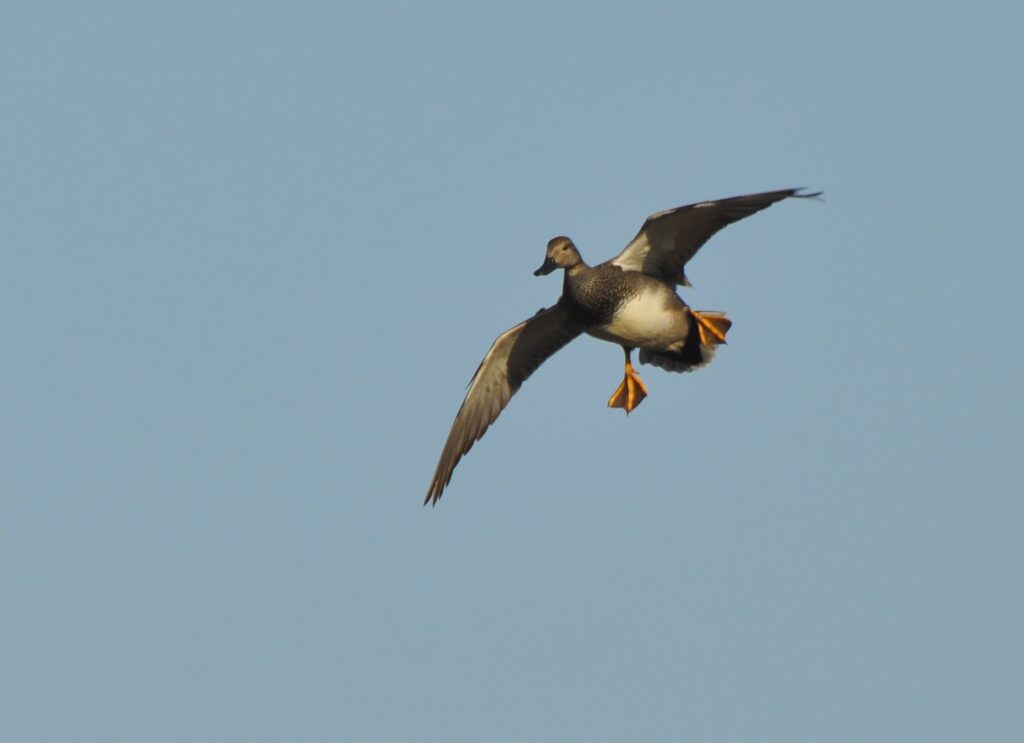Photography courtesy of Lowell Washburn, all rights reserved.
The final segment of Iowa’s [North Zone] duck season ended December 5th. Despite widespread drought and ever receding water levels, the 2023 season was surprisingly productive. In addition to seeing overall good duck numbers during much of the season, North Iowans also enjoyed five major migration days this fall, the largest occurring on October 31 when falling temperatures and howling northwest winds pushed tens of thousands of southbound ducks into the state.
As the migration continued, ducks became comparatively scarce as November wetlands began to ice over. By the time Thanksgiving rolled around, even the larger marshlands were locking down and Northern Iowa received 1 1/2-inches of new snowfall during the long weekend. By month’s end, regional temperatures had plummeted to as low as 3 degrees. Most ducks left the region and hunters called it a year. But although birds had become few and far between, there were still a handful of widely scattered mallards sitting along the last open air holes or utilizing limited stretches of fast moving waterways. One of those open stretches was found on Cerro Gordo County’s Beaver Dam Creek where, for whatever reason, the surface of a small, duckweed fringed beaver pond had remained ice free.
Although I hadn’t actually seen any birds on the tiny pond, I had observed a couple flocks of ducks feeding in nearby fields. So, when the season’s final day arrived on December 5th, I decided to give it a try, setting up with the beaver pond on my right side and harvested corn stubble on my left. The day began with heavily overcast skies, dense haze and a moisture laden, bone chilling wind. Although there were no ducks at first, things began looking up when, about an hour into daylight, I spotted a flock of around sixty mallards heading my way. But after briefly setting their wings, the greenheads quickly lost interest in my decoys and continued their journey through the gloomy sky.
From then on, the day was deader than dead. The skies remained vacant, and a pair of mid-morning crows were the only sign of life. By late afternoon, my initial optimism was taking a dive. Although the skies had now become crystal clear, not a single duck had appeared since early morning. As the sun began to sink to the horizon, I thought about packing it in and picking up the decoys while there was still daylight.
And then it happened. With only five minutes to go until the season’s sunset closure, a rapidly advancing duck suddenly appeared from the southeast. Boring straight for the pond, the bird never circled, never hesitated, but upon setting its wings, dropped straight for the open water.

At fifteen yards, I took the shot — and with only four minutes to spare, the last duck of the season fell from sky. It was an amazing turn of events. But even more amazing was the fact that the bird was not a lonely late season mallard, but rather a plump and beautiful drake gadwall. Arriving from the northern plains during mid-season, migrating gadwalls will have typically vacated Northern Iowa by the end of October. This year was no exception and, until this very minute, I hadn’t seen the species for at least a month. A gadwall was about the last duck I would have expected to bag on the last day of the December season. And so, this year’s unusual drought plagued duck season had concluded with an equally unusual, surprise ending. For me, the gadwall served as one more reminder that, regardless of current habitat conditions or lack of bird numbers, a person should never ever stay home if they have the chance to go on a duck hunt. You just never know what will happen.

 Tom Cope
Tom Cope Sue Wilkinson
Sue Wilkinson Susan Judkins Josten
Susan Judkins Josten Rudi Roeslein
Rudi Roeslein Elyssa McFarland
Elyssa McFarland Mark Langgin
Mark Langgin Adam Janke
Adam Janke Joe Henry
Joe Henry Kristin Ashenbrenner
Kristin Ashenbrenner Joe Wilkinson
Joe Wilkinson Dr. Tammy Mildenstein
Dr. Tammy Mildenstein Sean McMahon
Sean McMahon